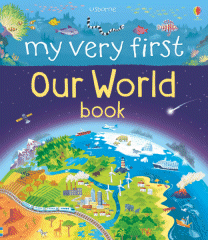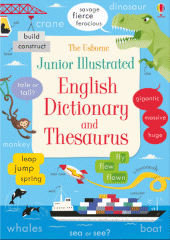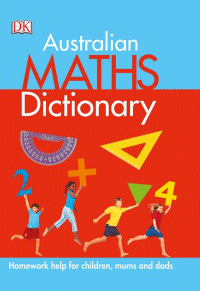
My Very First Book of Our World
My Very First Book of Our World
Matthew Oldham
Lee Cosgrove
Usborne, 2016
12pp., hbk., RRP $A19.99
9781474917896
One of the wonderful things about working with our youngest readers is watching them emerge like The Very Hungry Caterpillar from their self-centred world focused on their immediate family and surrounds into creatures who not only realise that there is a larger world around them but want to explore it oand take it on head on. So this large-format board book is the perfect starting place to help Miss 5 and all those like her to start to learn about this planet they live on, how it works, how it is shaped and who they share it with.
Beginning with a personalised explanation of night and day and how it and the seasons differ in different places, young readers them learn about the features and creatures of deserts, rainforests, polar regions mountains, rivers, coast, oceans and even under their feet. There are pages about wild weather (very appropriate right now) and volcanoes and earthquakes are explained in lanuage and diagrams that they understand.
Apart from answering their questions at a level that is accessible to them, My Very First Book of Our World also starts to develop their information literacy skills as they start to realise that books contain information as well as stories and books can offer them the explanations they are seeking so it makes sense to them. As they see pictures of new worlds and unfamiliar places and creatures, their world continues to expand as they demand to know more and more.
As well as being a useful addition to the non fiction collection for early readers, with Christmas coming and parents and grandparents looking for suggestions for Christmas stockings, this is one to share with them. Miss 5 will find it in her stocking!

